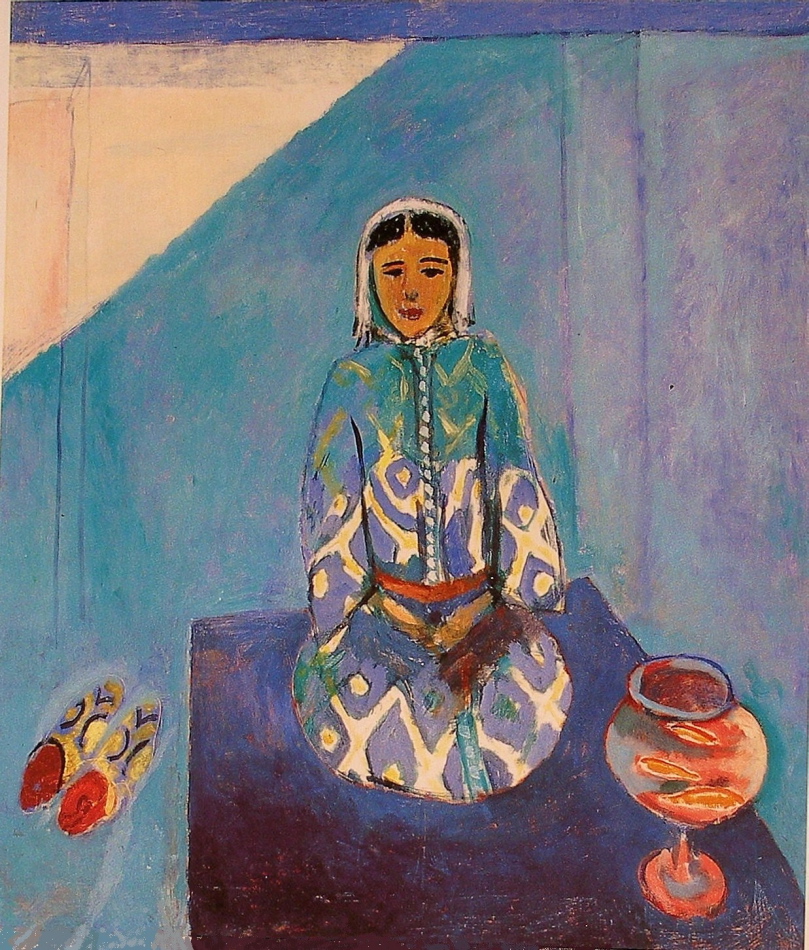In this painting Matisse shows us the importance of shape motifs and how the reductive process brings forth sophistication.
Let me begin with the rhythm we sense from his wonderful motif of ovals. The harmony of the three ovals of the fish bowl integrating with the oval forming the lower portion of the kneeling figure is truly elegant. Another rhythm of shapes is the arrangement of, may I term, pointed ovals. The fish, her slippers and that wonderful orange one just below her belt. There are more within the slippers and of course colour temperature comes into play with the warms harmonizing with her face.
This brings me to another question which I think shows us Matisse’s level of sophistication. Why doesn’t the white and blue design of her garment continue up to her shoulders? The reason, I feel, is if the strong pattern continued it would be competing with her face which is the focus of the composition. Having reduced the contrast by almost blending the pattern with the background is superb.
How Matisse reduced the architecture and light to simple lines and shapes is revolutionary, and will greatly influence twentieth century art. We respond to the colours and interpret with our senses!
Matisse has provided artists the opportunity of refining, by reducing information, (removing the superfluous), which is a fascinating pursuit.
I would also like to mention another very refined use of integration. Go to the top right of the carpet. Can you feel a connection running through her arm to the dark rectangle shape? Can you feel a plane coming forth? I hope you can.

